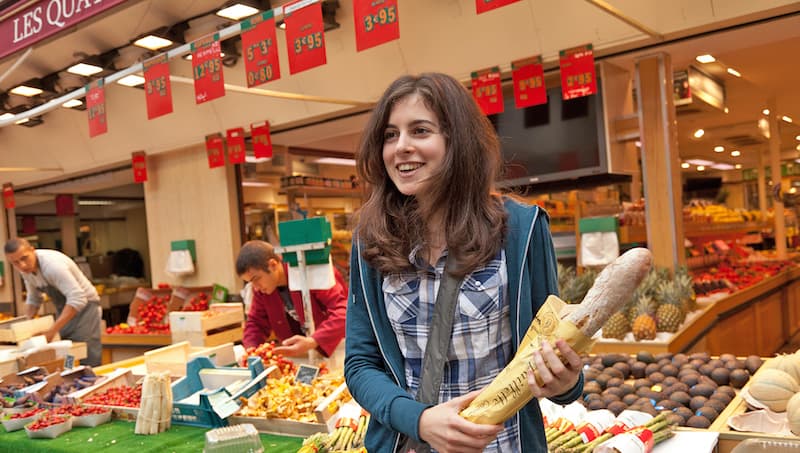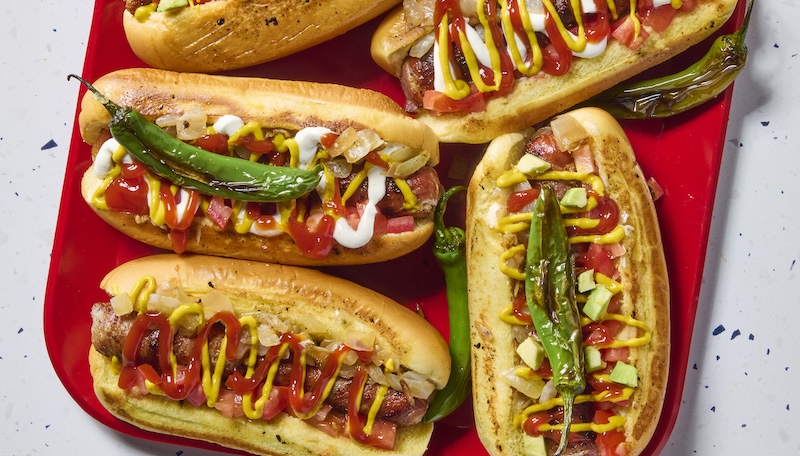Rick Steves’ Europe: Fine Living at a Paris Market
Plucking a picnic from the neighborhood shops

Travel writer Rick Steves shares his food finds in Paris’ Rue Cler street market as he explores the shops with a restaurateur friend, Marie.
As we’ve had to postpone our travels because of the pandemic, I believe a weekly dose of travel dreaming can be good medicine. Here’s one of my favorite European memories from the streets of Paris – a reminder of the fun that awaits us at the other end of this crisis.
I grew up thinking cheese was no big deal. It was orange and the shape of the bread: slap, fwomp … cheese sandwich. Even though I’m still far from a gourmet eater, my time in Paris – specifically shopping at the Rue Cler street market with my restaurateur friend Marie – has substantially bumped up my appreciation of good cuisine.
In the skinny shadow of the Eiffel Tower, Rue Cler still feels like village Paris. Lined with shops that spill out into the street, it’s also bustling with shoppers. Marie explains that Parisians shop almost daily for three good reasons: their tiny kitchens have tiny refrigerators, fresh produce makes for a good meal, and they like shopping. It’s an important social event: a chance to hear about the butcher’s vacation, see photos of the florist’s new grandchild, relax over un cafe, and kiss the cheeks of friends. Demonstrating back and forth on my cheeks, Marie says, “The Parisian standard is twice for acquaintances (kiss, kiss) and three times for friends you haven’t seen in a while – like you (kiss, kiss, kiss).”
Culinary treasures
The neighborhood produce shop wraps around the corner with an enticing rainbow of fruits and vegetables on display. Next door, the fishmonger sells the freshest fish, which are brought in daily from ports on the English Channel, 100 miles away.
At the boucherie, Marie shows me things I might have otherwise avoided on her menu: rognons (kidneys), foie (liver), coeur de boeuf (heart of beef). She hoists a duck to check the feet; they should be rough and calloused, an indication that they weren’t stuck in an industrial kennel but ran free on a farm. She explains, “While Americans prefer beef, pork, and chicken, we French eat just as much rabbit (lapin), quail (caille), lamb (agneau), and duck (canard). The head of a calf is a delight for its many tasty bits.” The meat is seasonal. In the winter, game swings from the ceiling.
Farther down Rue Cler, the picnic-friendly charcuterie (or traiteur) sells mouthwatering deli food to go. Because apartment kitchens are so small, these handy gourmet delis make it easy for Parisians to supplement their dinners in style.
The smell of cheese heralds the fromagerie. It’s a festival of mold, with wedges, cylinders, balls, and miniature hockey pucks all powdered white, gray, and burnt marshmallow. Browsing with me through a world of different types of cheese, Marie explains, “Ooh la la means you’re impressed. If you like cheese, show greater excitement with more las. Ooh la la la la.”
She leads me to the goat-cheese corner, holds the stinkiest glob close to her nose, takes a deep, orgasmic breath, and exhales, saying, “Yes, this smells like zee feet of angels.”
The white-smocked cheesemonger knows Marie well. Sensing I’m impressed by his shop, he points out the old photo on the wall from when his father ran the shop. It was labeled BOF for beurre, oeuf, fromage. For generations, this has been the place where people go for butter, eggs, and cheese. As if I’m about to become a convert to the church of stinky cheese, he takes us into the back room for a peek at les meules – the big, 170-pound wheels (250 gallons of milk go into each). Explaining that the “hard” cheeses are cut from these, he warns me, “Don’t eat the skin of these big ones … they roll them on the floor. But the skin on most smaller cheeses – the Brie, the Camembert – that is part of the taste.” Marie chimes in, “It completes the package.”
And what’s cheese without bread? The bakery is our final stop. Locals debate the merits of rival boulangeries. It’s said that a baker cannot be good at both bread and pastry. At cooking school, they major in one or the other. But here on Rue Cler, the baker bucks the trend. Marie explains that this baker makes good bread (I get a baguette for my sandwich) and delicious pastries. Voila, dessert!
By now, I’ve assembled the ingredients for the perfect picnic. Marie heads off to her restaurant, while I head for a park bench with a view of the Eiffel Tower, settle in, and enjoy my Rue Cler feast. A passerby smiles and wishes me a cheery “Bon appetit!”
Rick Steves (www.ricksteves.com) writes European guidebooks, hosts travel shows on public TV and radio, and organizes European tours. This article was adapted from his new book, For the Love of Europe. You can email Rick at rick@ricksteves.com and follow his blog on Facebook.
Explore more of Rick Steves’ Europe in Boomer
© 2020 RICK STEVES
As an Amazon Associate, Boomer Magazine earns from qualifying purchases of linked books and other products.



